Storing patio furniture in your garage during the off-season is a smart way to protect your investments and extend their lifespan.
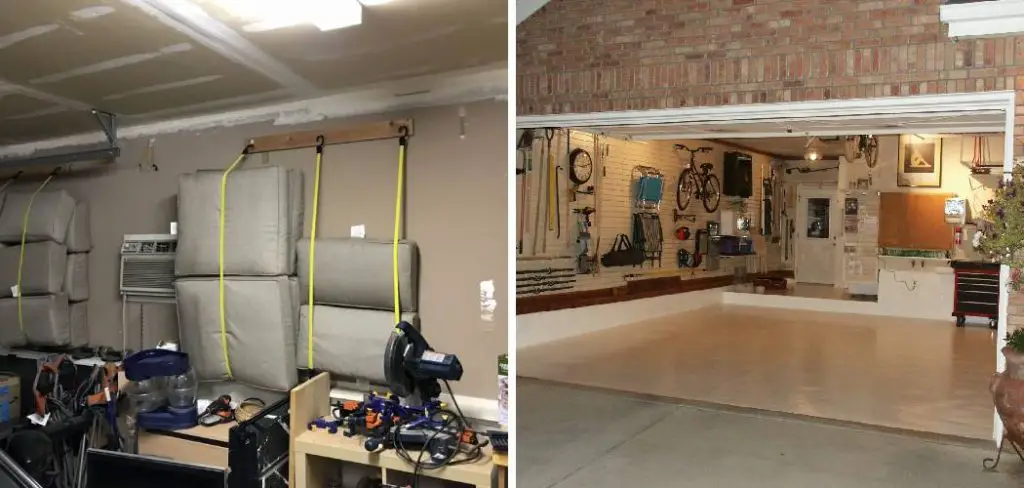
Proper storage not only helps to maintain the furniture’s appearance but also keeps it in good functional condition, shielding it from harsh weather and potential damage. In this guide, we will explore how to store patio furniture in garage, ensuring it remains ready for use when the warm weather returns.
Importance of Properly Storing Patio Furniture
Properly storing patio furniture is crucial for several reasons. First and foremost, it helps to safeguard your investment by preventing wear and tear caused by exposure to the elements. Rain, snow, and UV rays can lead to fading, rust, and deterioration, diminishing both the aesthetic appeal and functionality of your furniture.
Additionally, correct storage reduces the likelihood of pests making their homes in cushions or frames, which could result in costly damages. By taking the time to store your patio furniture correctly, you not only extend its lifespan but also ensure that it stays clean and ready for use when the outdoor season arrives again.
Types of Patio Furniture
When it comes to patio furniture, there is a wide variety of styles and materials to choose from, each serving different aesthetics and functional needs. Here are some of the common types:
- Wooden Furniture: Known for its classic appeal, wooden patio furniture can enhance the charm of any outdoor space. Options like teak, cedar, and eucalyptus are popular due to their durability and resistance to the elements.
- Metal Furniture: Often made from aluminum or wrought iron, metal patio furniture is robust and can withstand harsh weather. It typically offers a modern look, with options for intricate designs that add elegance to any patio.
- Wicker Furniture: Wicker, made from woven synthetic materials, is lightweight and versatile. This type of furniture often provides a cozy, homey feel and is ideal for creating inviting lounge areas.
- Plastic and Resin Furniture: Often the most budget-friendly option, plastic and resin furniture is resistant to fading and is easy to maintain. It comes in various styles and colors, suitable for casual or contemporary outdoor settings.
- Umbrellas and Shade Structures: While not traditional furniture, umbrellas and other shade structures play a crucial role in outdoor seating areas, providing necessary protection from the sun and enhancing overall comfort.
Understanding the different types of patio furniture can help you make informed decisions about your outdoor space, ensuring it reflects your style while meeting your needs.
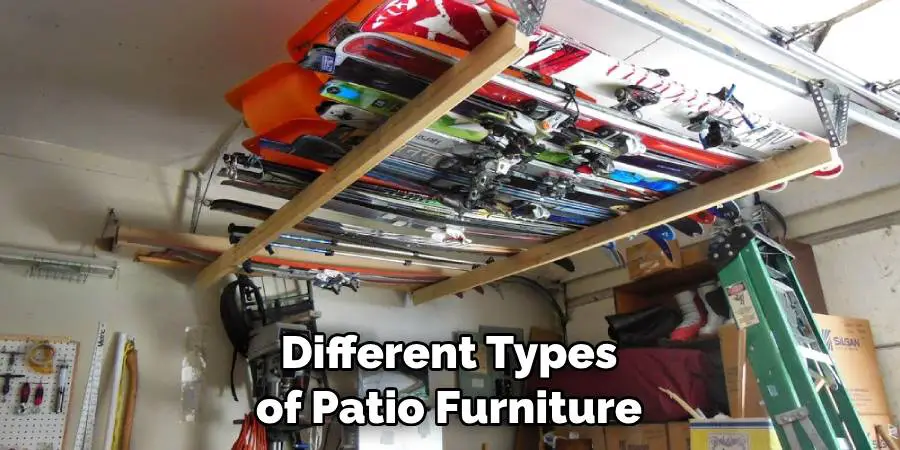
10 Methods How to Store Patio Furniture in Garage
1. Clean the Furniture Before Storing
Before placing your patio furniture in the garage, it’s essential to clean it thoroughly. Dirt, grime, and moisture can degrade the materials over time, leading to rust, mold, or discoloration.
For metal or plastic furniture, use soapy water and a soft brush to remove any surface dirt, and for wood furniture, apply a suitable wood cleaner. Cushions and fabric should also be cleaned and dried completely to prevent mildew. By cleaning the furniture first, you ensure that it stays in good condition while in storage.
2. Disassemble the Furniture for Compact Storage
Disassembling patio furniture is one of the most effective ways to save space in your garage. Many pieces, such as tables, chairs, and umbrellas, can be broken down into smaller components. Remove legs from tables, fold chairs, and take apart any sectional pieces.
Not only does this make it easier to fit everything into the garage, but it also prevents strain on the furniture, which might occur if it’s left assembled for long periods. Make sure to store all the screws and small parts in labeled bags to avoid losing them when reassembling.
3. Use Furniture Covers for Protection
Even though your patio furniture is stored indoors, it’s still essential to protect it from dust, moisture, and potential scrapes. Investing in furniture covers can help extend the life of your furniture by shielding it from these hazards.
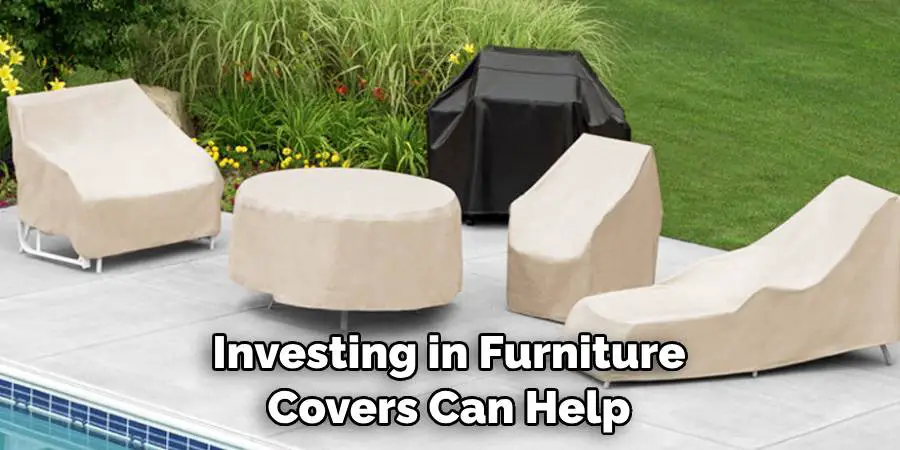
Covers designed specifically for outdoor furniture are water-resistant and often breathable, preventing moisture buildup while providing protection from dust and dirt. If you don’t have furniture covers, using old blankets or sheets can also help prevent scratches during storage.
4. Stack Chairs and Tables to Maximize Space
If your patio set includes stackable chairs or tables, take advantage of this feature to save floor space in your garage. Stackable furniture allows you to vertically store multiple pieces in the footprint of just one.
When stacking chairs, place protective padding, such as a towel or sheet, between them to prevent scratches or scuffs. If you have tables that can be stacked or nested, apply the same method. This approach minimizes the amount of space the furniture occupies, leaving room for other stored items.
5. Hang Furniture on the Wall
For larger pieces of patio furniture that don’t easily stack or disassemble, such as chaise lounges or benches, consider wall-mounted storage solutions. Heavy-duty hooks or brackets can be installed on your garage walls to hold furniture off the ground, keeping the floor space clear for other items.
Hanging furniture also reduces the risk of damage by keeping it out of the way of vehicles or other moving objects. Ensure that the hooks or brackets are securely fastened and can support the weight of your furniture.
6. Use Overhead Storage for Lightweight Items
If you’re short on wall or floor space, overhead storage racks can be a great way to store patio furniture in your garage. This is particularly useful for lightweight items like cushions, umbrellas, or foldable chairs.
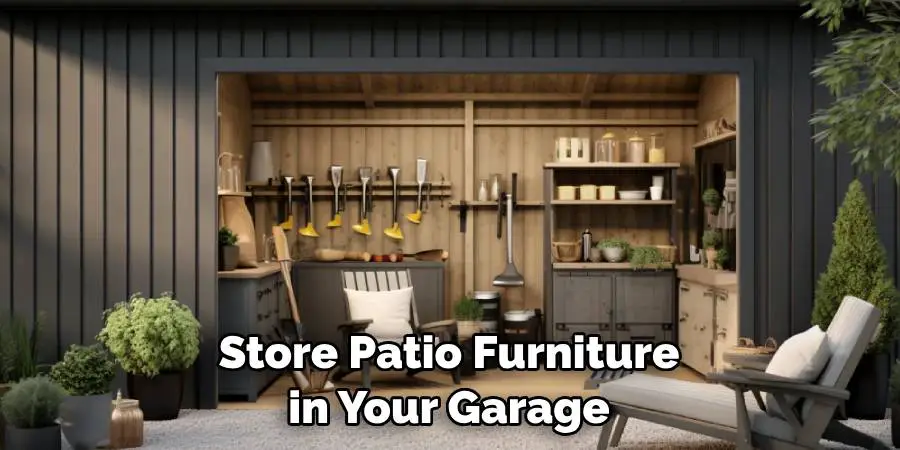
Installing a ceiling-mounted rack or using an overhead storage loft keeps these items off the ground and out of the way, while still making them easily accessible when needed. Just be sure to avoid overloading the racks, as excessive weight can strain the ceiling structure.
7. Store Cushions Separately in Waterproof Bins
Cushions and pillows from your patio furniture are prone to mildew if exposed to moisture during storage. To protect them, store cushions in waterproof storage bins or vacuum-sealed bags. These containers shield fabric from dust, moisture, and pests, ensuring that your cushions stay fresh and clean.
Label each bin with its contents so you can quickly find the items you need when it’s time to bring the furniture out of storage. For extra protection, consider adding a moisture absorber to the bin to keep humidity levels low.
8. Keep Furniture Away from Garage Doors and Windows
When deciding where to place your patio furniture in the garage, avoid storing it near garage doors or windows. These areas are more exposed to temperature fluctuations and moisture, which can lead to rust or warping. Instead, place your furniture in a more climate-stable part of the garage where it will be less vulnerable to changes in temperature or humidity.
If space is limited, try positioning your furniture away from the edges of the garage to avoid direct sunlight or drafts that could cause damage.
9. Use a Rolling Cart for Easy Transport and Storage
A rolling cart can make it easier to move and store patio furniture in your garage, especially if you need to rearrange the space frequently or take the furniture in and out of storage.
Rolling carts with multiple shelves or platforms can hold cushions, small tables, or folded chairs, allowing you to transport them without heavy lifting. This method is particularly helpful if your garage is shared with vehicles or other bulky items, as you can quickly move the furniture when needed.
10. Organize and Label Everything for Easy Access
To make the process of storing and retrieving your patio furniture as efficient as possible, it’s important to keep everything organized. Group similar items together, such as placing all chairs in one area, tables in another, and cushions in bins.
Label bins or shelves with the contents to make it easier to find what you’re looking for when it’s time to set up your outdoor space again. Proper organization not only keeps your garage tidy but also reduces the risk of damaging the furniture by accidentally placing heavy items on top of fragile pieces.
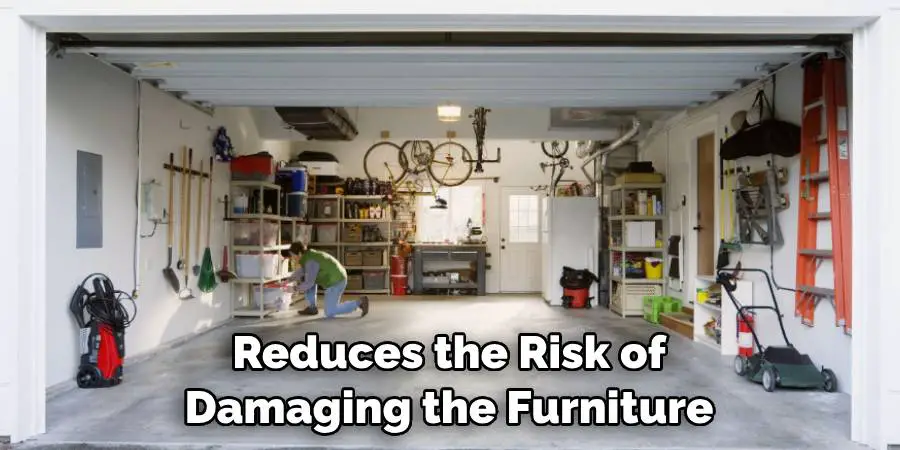
Maintenance Tips for Patio Furniture
To ensure your patio furniture remains in great condition throughout the season, regular maintenance is key. First, clean your furniture regularly with a mild soap solution and a soft cloth to remove dirt and grime.
Avoid abrasive cleaners that could scratch surfaces. For metal furniture, consider applying a coat of rust-resistant spray to protect against corrosion. Additionally, inspect for any signs of wear or damage, such as loose screws or cracks, and address these issues promptly to prevent further deterioration.
When using cushions, remember to bring them in when not in use to reduce fading from sun exposure. Finally, perform a thorough end-of-season check to prepare your furniture for storage, ensuring it’s clean and in good repair before putting it away.
Tips for Achieving the Best Outdoor Furniture Storage Results
- Choose the Right Storage Location: Opt for a storage space that maintains a consistent temperature and low humidity to protect your furniture from environmental damage. A climate-controlled environment is ideal for especially sensitive materials.
- Prioritize Cleaning Before Storage: Always clean your furniture thoroughly before storing it. Removing dirt, leaves, and moisture helps prevent mildew and decay during storage and keeps your furniture looking pristine when you take it out for use.
- Utilize Protective Gear: Invest in proper protective gear such as furniture covers, corner protectors, or padded wraps. These items provide an additional layer of defence against scratches and dings while in storage.
- Regular Maintenance Checks: Even while stored, periodically check on your patio furniture to ensure it remains in good condition. Look for signs of moisture retention or pest infestations and address any issues immediately.
- Get Creative with Storage Solutions: Don’t hesitate to think outside the box. For example, repurposing an old bookshelf as horizontal storage for cushions or using wall-mounted shelving for smaller items can maximize your space effectively.
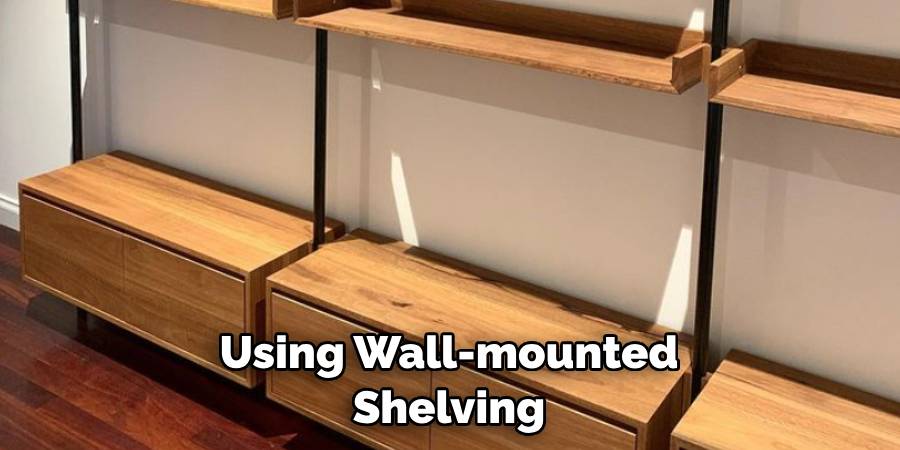
By following these tips, you can ensure your patio furniture stays in optimal condition during the off-season, ready for enjoyable use when the warmer weather returns.
Common Mistakes to Avoid
- Neglecting to Measure Before Storing: One common mistake is failing to measure both the furniture and the available storage space. This can lead to cramped conditions or difficulty accessing stored items. Always measure beforehand to ensure everything fits comfortably.
- Ignoring Manufacturer Instructions: Each type of patio furniture may come with specific care guidelines. Ignoring these recommendations can result in damage. Always refer to the manufacturer’s instructions for cleaning and storage to maintain the integrity of your pieces.
- Overlooking Small Items: Small items such as cushions, table accessories, or tools can easily get lost in storage. Make sure to store these items in clearly labelled bins or containers to avoid misplacing them and to facilitate faster setup when needed.
- Rushing the Cleaning Process: Skipping the cleaning step or hurrying through it can lead to long-term damage. Take the time to clean each piece thoroughly, as dirt and moisture can cause mildew and decay when left unaddressed.
- Failing to Protect Against Pests: Not considering pest prevention can result in significant damage to fabrics and wood. Using natural repellents or pest traps around your stored furniture can help safeguard against infestations.

By avoiding these common pitfalls, you can ensure a smoother and more effective outdoor furniture storage experience, ultimately prolonging the life and quality of your pieces.
Conclusion
Storing patio furniture in your garage can be a straightforward process with the right methods in place. From cleaning and disassembling furniture to utilizing wall and overhead storage, there are several ways to maximize space and protect your outdoor furniture during the off-season.
Investing in furniture covers, stacking chairs, and using rolling carts are practical strategies that help keep your furniture in good condition while also maintaining an organized garage. Thanks for reading, and we hope this has given you some inspiration on how to store patio furniture in garage!
I am Rick. I grew up helping my dad with his handyman service. I learned a lot from him about how to fix things, and also about how to work hard and take care of business. These days, I’m still into fixing things- only now, I’m doing it for a living.
I’m always looking for new ways to help people grow and develop. That’s why I have created this blog to share all my experience and knowledge so
that I can help people who are interested in DIY repair.
